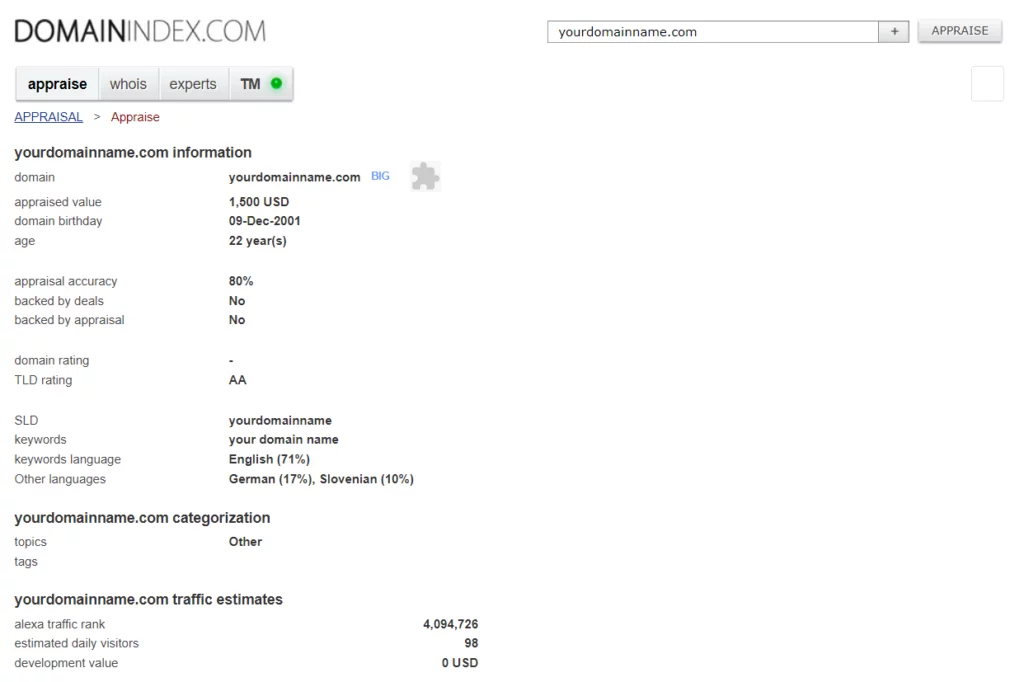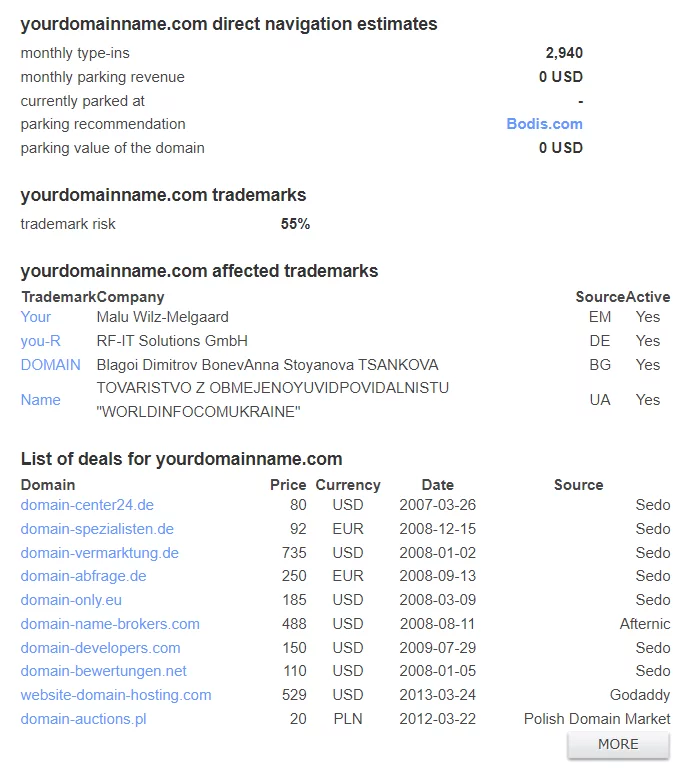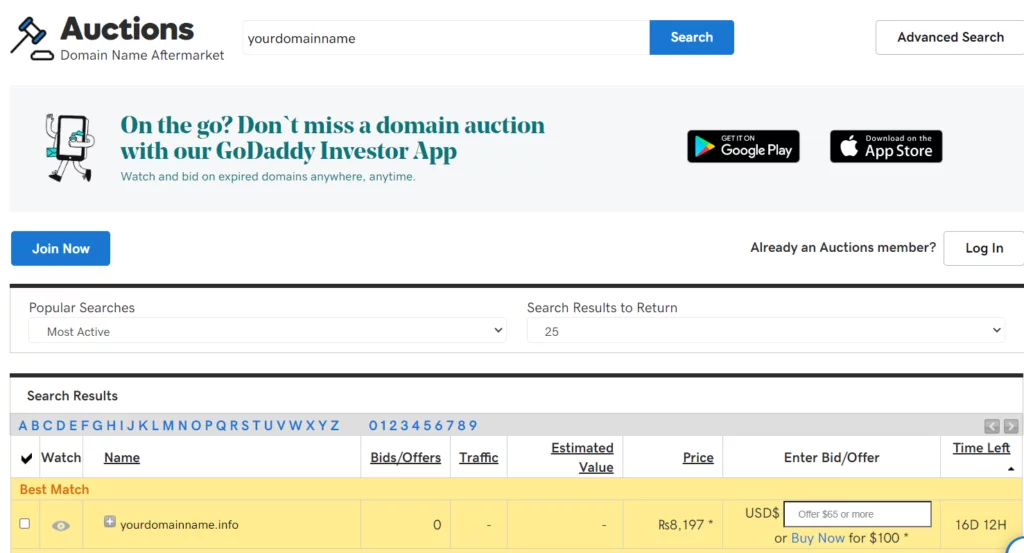Domain flipping, the practice of buying and selling domain names for profit, has emerged as a lucrative online venture. Similar to real estate investment, domain flipping involves acquiring valuable digital properties and then selling them at a higher price. One famous example of domain flipping is of Elon Musk. He said in 2018 on Twitter that it actually cost $11 million to buy the domain name “tesla.com.”
Achieving success in the domain flipping industry requires a grasp of domain valuation and domain investing, which might be unfamiliar territory for beginners. In this blog, we’ll delve into the world of domain flipping, exploring the types of domains that are best for flipping, the step-by-step process of flipping a domain, the advantages it offers, and the associated risks.
Process of Domain Flipping
Step #1 Identifying a Profitable Domain
Finding domain names that are worthwhile investments is the first step in the process of domain flipping. Ideally, pick domain names with a high chance of appreciation. Some of the elements that affect a domain’s prospective value include the following:
- Length: Due to their improved user experience (UX) and increased brand recognition, short domains are often more sought-after. In reality, the most well-known website domains, such tiktok.com, tesla.com, and twitter.com, have less than 15 characters.
- Extensions: The top-level domain (TLD) you choose has a significant impact on the price of your extension. Popular TLDs like.com and.co will cost more, but because they are more reliable and trustworthy, they are simpler to sell. Nevertheless, alternatives like city TLDs might help startups and small companies aiming to build their brands locally. According to Statista, here is the list of most popular top-level domains worldwide:
- Enhancing discoverability: Domains that are optimized for keywords tend to possess greater market value, as they play a vital role in improving SEO. Utilize tools like Google Trends and Google Keyword Planner to identify popular search queries and incorporate them intelligently into your domain names. Some domain marketplaces, such as Sedo, provide keyword search tools to assist you in generating domain name ideas.
- Relevance to a specific niche: For online businesses, domain names related to a particular industry, location, or products and services are highly preferred. Such domains can contribute to optimizing their websites and marketing campaigns effectively.
However, it’s crucial to remember that relying solely on these factors might not guarantee success in domain flipping, as the value of a domain can fluctuate significantly over time.
Once you have identified a promising domain, it is imperative to check its availability before proceeding further. Websites like GoDaddy, GeekFlare, Namecheap, and Name.com offer this service.
In case the domain is already registered, the tool will provide alternative suggestions or propose using different top-level domains (TLDs). Moreover, advanced search filters are accessible to assist you in refining your search results further.
Alternatively, if you desire personalized domain names, you can utilize a domain name generator to explore and refine various ideas to better suit your preferences.
Step #2 Securing the Domain Name
Once you’ve identified a promising domain, the next step is to register it. A domain name reservation company plays a pivotal role in managing domain name reservations. When purchasing a domain name, the process will largely depend on the chosen registrar.
Therefore, it is crucial to consider the following factors before making a decision:
- Transfer Process: Before finalizing a domain purchase, it is essential to review the registrar’s domain transfer policy. Some registrars may have more complex transfer procedures compared to others.
- Pricing: Carefully read the registrar’s terms of service and be on the lookout for any hidden fees. Avoid registrars that entice with low first-year registration fees but charge exorbitant redemption fees later on.
- Expiration Policy: Opt for registrars that offer automatic renewals to ensure you can renew your domain name before it expires. This prevents others from registering it instead.
- Domain Privacy Protection: Prioritize registrars that provide domain privacy services to safeguard your domain registration information from being hijacked or misused.
Some web hosting providers offer a complimentary domain name registration with their web hosting plans. However, it is also possible to independently purchase and register a domain, with some registrars offering attractive initial registration fees for popular top-level domains (TLDs). The Best 10 Domain Name Registrars of 2023 are:
- Namecheap: Best Overall
- Domain.com: Best for Long-Term Discounts
- Google Domains: Best for Value for Price
- DreamHost: Best for Customer Support
- Hover: Best for Bulk Discounts
- GoDaddy: Best for Ultra-Low Intro Rates
- Nestify: Best for Premium hosting and a free Domain
- HostGator: Best for Low-Cost Hosting with a Free Domain
- Network Solutions: Best for 100-Year Registrations
- BuyDomains: Best for Premium Domains
For those seeking a more convenient option and wishing to avoid the process of finding a registrar independently, website builders can be a helpful solution. Certain website builders include domain registration as part of their sign-up process, simplifying the entire experience.
Step #3 Evaluating the Domain Price
Estimating the right price for your domain is crucial. Several factors influence a domain’s value, including its length, keyword relevance, search engine ranking, and market demand. Online appraisal tools can help gauge the potential value of your domain, but it’s also wise to seek advice from experienced domain flippers or professionals. Here are some effective approaches for determining the potential market value of your domain:
- Research the domain market: A valuable starting point is to examine historical sale prices of similar domains. Websites like NameBio and ShortNames offer databases of past domain name sales, enabling you to estimate your domain’s worth.
- Seek advice from domain experts: Engage with professional domainers on forums such as NamePros and DNForum. These platforms provide a wealth of knowledge and updates on domain trends, helping you devise a solid strategy for flipping domains.
- Utilize domain appraisal tools: Online appraisal tools can give you an estimate of your domain’s price based on factors like its length, wording, and SEO-friendliness. Consider using free tools like Domainindex.com and Domain Value Checker for this purpose.


Once you’ve researched the potential selling price of your domain, it’s time to determine your pricing strategy. The two most common methods are fixed and flexible pricing.
- Fixed pricing: This method involves setting a specific price for your domain, eliminating the need for negotiation during the transaction process. Fixed pricing works well for selling domains on marketplaces, as it facilitates faster transactions.
- Flexible pricing: With a flexible pricing strategy, you have more control over the domain’s price. You may set a reserve price, but occasionally the domain can sell for more during the negotiation process. Keep in mind that this approach may take longer and require more effort.
Ultimately, the most effective strategy varies for each domain investor. Experiment with both methods to determine which works best for you and your domain portfolio. Adapt your approach based on market trends and the specific characteristics of each domain you own.
Step #4 Selecting a Platform for Selling Domains
To reach potential buyers effectively, you need to choose the right platform for listing your domains. Several domain marketplaces, auction websites, domain brokers, and forums cater to domain sellers and buyers. Some of these popular platforms include Sedo, GoDaddy Auctions, Flippa, Grit Brokerage, and NamePros. Choose a platform based on its reach, reputation, and fees. Consider the reach, fees, and reputation of these platforms before making a decision.

Step #5 Executing the Sale
Successfully closing a domain sale requires effective marketing and negotiation skills. Create compelling listings with clear and relevant information about the domain’s potential and benefits. Engage with potential buyers, respond to inquiries promptly, and be willing to negotiate on price to secure a sale.
Utilizing both outbound and inbound marketing strategies can enable you to sell domains independently, eliminating the need for involving a third party.
For outbound domain sales, the approach involves identifying potential domain buyers and directly engaging with them through personalized emails or phone calls. Social networking platforms like LinkedIn can serve as valuable resources for discovering new leads beyond conventional search engines. Leveraging LinkedIn’s extensive database, you can access essential company details, such as employee count, location, and industry.
To proceed, conduct a targeted search on LinkedIn for relevant companies and reach out to some of their top executives through personalized emails announcing the domain’s availability for sale. Keeping the message succinct and professional, using a business email will enhance your credibility and foster trust.
Organizing your leads in a smart manner is crucial, and employing customer relationship management (CRM) software is highly recommended. These toolkits come equipped with lead automation and tracking features, facilitating better lead management. You can easily identify potential buyers and those who may have declined the offer.
On the other hand, inbound domain sales rely on creating a dedicated landing page to pique the interest of potential buyers. The landing page should showcase your domain portfolio, highlighting the best features of each domain. Additionally, include a user-friendly contact form and contact details to make it convenient for interested parties to reach out to you.
Advantages of Domain Flipping
- Low Startup Costs
Compared to many other businesses, domain flipping requires minimal initial investment. Domain registration fees are relatively affordable, allowing individuals with limited resources to enter the market and potentially earn substantial profits.
- No Special Skills Required
While some knowledge of domain trends and market analysis can be advantageous, domain flipping does not demand specialized skills or qualifications. Anyone with a keen eye for potential opportunities and an understanding of online trends can participate in this venture.
- High Demand for Domains
The continuously expanding digital landscape and the increasing importance of having an online presence have driven up the demand for valuable domain names. As more businesses and individuals seek out unique and brandable domains, the potential for profitable sales remains high.
Risks of Domain Flipping
- Trademark Issues
Domain flippers must be cautious about potential trademark infringements. Registering and selling domain names that infringe on existing trademarks can lead to legal repercussions and financial losses. Conduct thorough research to ensure your domain does not violate any existing trademarks.
- Profitability Is Not Guaranteed
While domain flipping can be lucrative, there is no guarantee of immediate or consistent profits. Success in this field often depends on market trends, buyer demand, and the ability to identify undervalued domains accurately.
- Taxation on Earnings
Domain flipping profits are subject to taxation in most jurisdictions. It’s essential to keep accurate records of your transactions and consult with a tax professional to understand the tax implications in your specific region.
Conclusion
Domain flipping offers an exciting opportunity to enter the world of online real estate and potentially earn profits with minimal upfront costs. By understanding the types of domains to target, following a systematic approach to domain flipping, and being aware of the associated risks, aspiring domain flippers can set themselves up for success in this dynamic digital marketplace. Remember, while domain flipping holds promise, it requires diligence, adaptability, and a strategic approach to thrive in this competitive landscape.
FAQs
How can I find undervalued domains to flip?
Conducting thorough research and staying updated on current trends and industry developments are crucial for identifying undervalued domains. You can use domain appraisal tools, monitor auctions, and analyze keyword popularity to spot potential opportunities.
Is domain flipping a sustainable long-term business model?
While domain flipping can be profitable, it requires adaptability and continuous effort to keep up with market trends and demand. Sustainable success in domain flipping depends on the ability to identify valuable domains and effectively negotiate sales.
Are there any legal considerations when flipping domains?
Yes, it’s essential to be aware of trademark issues and avoid registering or selling domains that infringe on existing trademarks. Engaging in unethical practices, such as cybersquatting or domain name hoarding, can also lead to legal problems.



